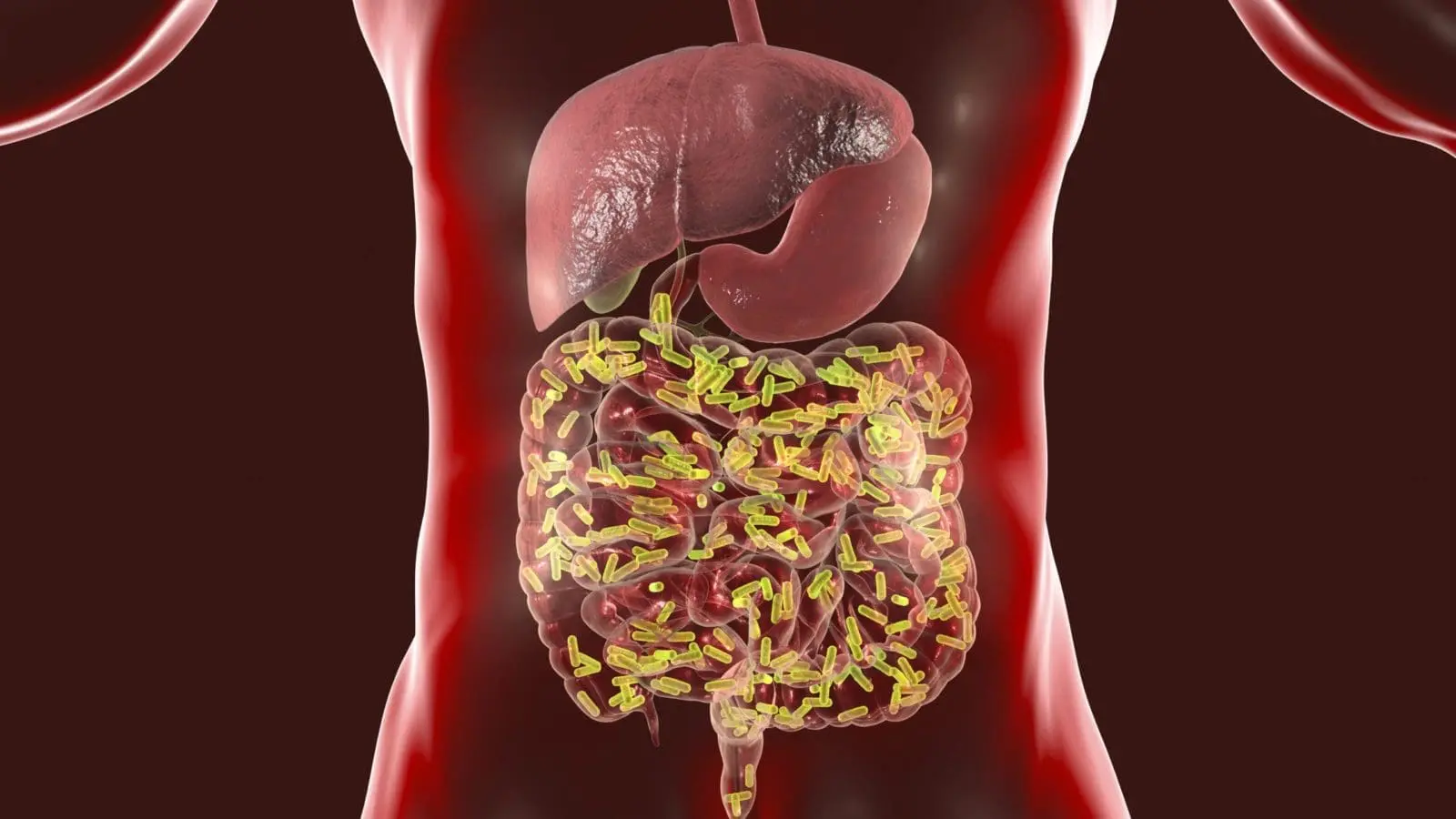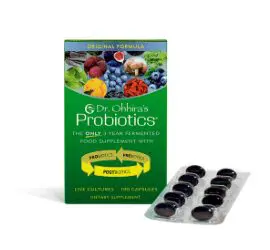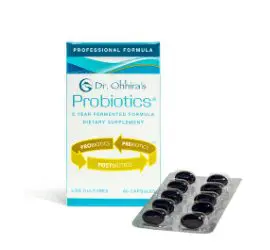The gut microbiome in healthy individuals consists of over 1,000 different species of bacteria, and a total population estimated to be over 100 trillion bacteria.¹،² This article will discuss several topics that are important to consider when choosing a probiotic supplement.
The Importance of Balance & Diversity
Let’s compare two of the most complex, diverse ecosystems in the world: the Amazon rainforest and your gut microbiome. In the Amazon, there are thousands of different species of insects, birds, reptiles and mammals, and each has a role in the overall ecosystem. Similarly, a healthy gut microbiome contains over a thousand species of bacteria, each with their individual DNA, which enables them to play unique roles in your gut microbiome.
Balance and diversity are critical factors for the health of ecosystems like the Amazon rainforest and the gut microbiome. Balance in the Amazon refers to the relative number of each type of animal living in the rainforest. For example, 1,000 monkeys may comfortably live in a certain area of the Amazon, but if 100,000 additional monkeys were added into the same area, the ecosystem would be terribly out of balance.
Diversity refers to the number of different species of plants or animals living in the ecosystem. Greater diversity of inhabitants generally confers greater strength, stability and resilience to ecosystems. The Amazon rainforest is a very diverse ecosystem. It is estimated to contain around 80,000 species of plants, approximately 2.5 million species of insects, 3,000 species of fish, 1,300 species of birds and hundreds of species of reptiles and mammals.
Now let’s examine balance and diversity in the gut microbiome and consider how taking high-dose probiotic supplements affects this ecosystem. Balance in your microbiome refers to the relative number of different species of bacteria residing in the colon. Studies using newer sequencing technology now estimate that the human gut microbiome contains from 3,000 to 5,000 different species of bacteria.³
When it comes to probiotic supplements, Americans frequently think ‘more is better’. It’s almost like there is a competition. People say, “Mine’s got 10 billion,’ or “Mine’s got 100 billion” or “My probiotic has 200 billion bacteria in every capsule.” Ingesting large doses of one or several species of bacteria works against balance and diversity. Probiotic supplements that contain multiple strains of bacteria are more effective at promoting balance and diversity compared to products that contain large doses of just one or several strains. Thirteen strains of bacteria are utilized in the production process for Dr. Ohhira’s Probiotics.
Nourishing Your Probiotic Bacteria
Probiotic bacteria are living organisms and like all animals, they need to be nourished. The food that probiotic bacteria require are dietary fibers and polyphenols. The compounds are referred to as prebiotics, and the best sources of these compounds are fruits and vegetables. However, various studies have reported that from 80-95% of Americans do not consume adequate amounts of fiber and polyphenol-containing fruits and vegetables.⁴،⁵ In addition to not eating and adequate quantity of fruits and vegetables, Americans also do not consume an adequate diversity of these foods. Different species of probiotic bacteria require different kinds of fibers and polyphenols for them to thrive and proliferate.
How many different types of fruits and vegetables do you eat each day? Fourteen different kinds of Japanese fruits, vegetables, mushrooms and seaweed are used in the fermentation process to produce Dr. Ohhira’s Probiotics. This ensures that the probiotic bacteria in Dr. Ohhira’s Probiotics are provided with a diversity of fibers and polyphenols.
When Dr. Ohhira’s Probiotics are encapsulated, each capsule contains probiotic bacteria along with some of the prebiotics that are utilized in the multi-year fermentation process. Thus, the probiotic bacteria in Dr. Ohhira’s Probiotics are packaged along with their own food supply.
The Folly of Taking High Dose Probiotics
It was previously stated that most Americans do not consume an adequate quantity or diversity of fruits and vegetables. The seriousness of these dietary short comings is summarized in an article titled The Malnourished Microbiome: American’s #1 Nutritional Deficiency.⁶ Because people don’t consume enough dietary fiber and polyphenols, taking high dose probiotics that contain an additional 10 or 100 billion bacteria per dose is not effective. Most of them will die; they will starve because there isn’t enough food to nourish the massive influx of new bacteria.
Key Differences in Probiotic Supplements
There are big differences in probiotic supplements. Here are some important things to consider when choosing a supplement.
1. Variety of Probiotic Strains
In general, probiotic supplements that contain multiple species of bacteria make more sense than ingesting a high dose of just one or several species. Multiple species support microbiome balance and diversity while high-dose probiotics work against balance and diversity. For example, 13 strains of probiotic bacteria are utilized in the 3-year fermentation process to produce Dr. Ohhira’s Probiotics.
2. Production Process
The production process is also an important consideration. Most probiotic companies simply cram bacteria into a capsule or tablet. Dr. Ohhira’s Probiotics is a fermented food probiotic in which a variety of foods are fermented with 13 “starter” strains of bacteria for a period of 3-years, which results in the production of a wide range of postbiotic metabolites. Other products simply do not meet these critical features.
3. Inclusion of Prebiotics
Prebiotics are the compounds in foods, primarily dietary fibers and polyphenols, that nourish your probiotic bacteria. The best sources of prebiotics are fruits and vegetables. It was previously mentioned that most Americans don’t consume adequate amounts of fruits and vegetables, which contributes to a malnourished microbiome. Combining prebiotics with probiotics makes sense because it provides nourishment for the bacteria. Two of the most common prebiotics added to some probiotic capsules are inulin and fructooligosaccharides (FOS). However, only adding one or two prebiotic fibers to a probiotic formulation ignores the importance of diversity. The microbiome contains many different species of probiotic bacteria, which require different kinds of fiber and polyphenols. Fourteen different foods are used in the production process for Dr. Ohhira’s Probiotics.
4. The Importance of Postbiotic Metabolites
Postbiotic metabolites are compounds that are produced by probiotic bacteria when they ferment dietary fibers and polyphenols in the colon. Postbiotic metabolites are critically important compounds that regulate many aspects of health. However, poor diets, antibiotics and exposure to environmental toxins cause many people have a dysregulated microbiome, which means the probiotic bacteria in their gut microbiome are not capable of producing a diversity of postbiotic metabolites. The importance of postbiotic metabolites were discussed in a paper titled Postbiotic Metabolites: The New Frontier in Microbiome Science. After 3 years of fermentation, each dose of Dr. Ohhira’s Probiotics delivers over 500 postbiotic metabolites. That’s The Dr. Ohhira’s Advantage.
5. Quality of Ingredients Used
The ingredients used in making a probiotic product need to be of the highest quality, which is why plant-based, non-dairy, gluten-free, non-GMO ingredients are preferred. Dr. Ohhira’s formula meets all these criteria; the fruits, vegetables, mushrooms, and seaweeds used in Dr. Ohhira’s fermentation process are all healthfully grown without the use of pesticides or other chemicals. Dr. Ohhira’s Probiotics is an award-winning, high-quality product that is specifically designed to support a happy gut ecosystem.
6. Stability and User Friendliness
Probiotics are living microorganisms that are sensitive to heat and moisture. High temperatures and excessive humidity can negatively affect probiotic bacteria, which reduces their viability and their effectiveness. Thus, many probiotics must be refrigerated to maintain probiotic potency. One of the nicest features of Dr. Ohhira’s Probiotics is that they do not require refrigeration because the bacteria in Dr. Ohhira’s Probiotics learn to survive and thrive at room temperatures during the 3-year fermentation period. Dr. Ohhira’s Probiotics has a three year shelf life from the date of manufacture.
Dr. Ohhira’s Probiotics are encapsulated in a patented capsule that stays hard in the acidic environment in the stomach, and then it becomes porous and released the contents in the more alkaline environment in the intestines. This means that Dr. Ohhira’s Probiotics can be taken at any time, full stomach, empty stomach, and any time of the day. Just take them daily to gain The Dr. Ohhira’s Advantage.
Choose the Best Probiotic Formula for Optimal Gut Health
Dr. Ohhira’s probiotic formula has been highlighted several times here, and for good reason. Fermented from all natural ingredients over three years using both time-tested Japanese techniques and modern science. Dr. Ohhira’s Probiotics are the #1 product in the world for the direct delivery of postbiotic metabolites. To learn more, contact Essential Formulas or visit www.Essentialformulas.com
References:
1 Sankar SA, et al. The human gut microbiome, a taxonomic conundrum. Systematic and Applied Microbiology. Jun 2015;38(4):276-286.
2 Turnbaugh PJ, et al. The Human Microbiome Project. Nature. 2007;449:804-810.
3 Rosenberg E. Diversity of bacteria within the human gut and its contribution to the functional unity of holobionts. npj Biofilms Microbiomes 10, 134 (2024).
4 Quagliana D and Felt-Gunderson P. Closing America’s Fiber Intake Gap. Am J Lifestyle Med. 2017 Jan-Feb;11(1):80-85.
5 Clemens R, et al. Filling America’s fiber intake gap: summary of a roundtable to probe realistic solutions with a focus on grain-based foods. J Nutr. 2012 Jul;142(7):1390S-1401S.
6 Pelton R. The Malnourished Microbiome: American’s #1 Nutritional Deficiency. Integrative Medicine. 2022 Jul;21(3):30-34.





